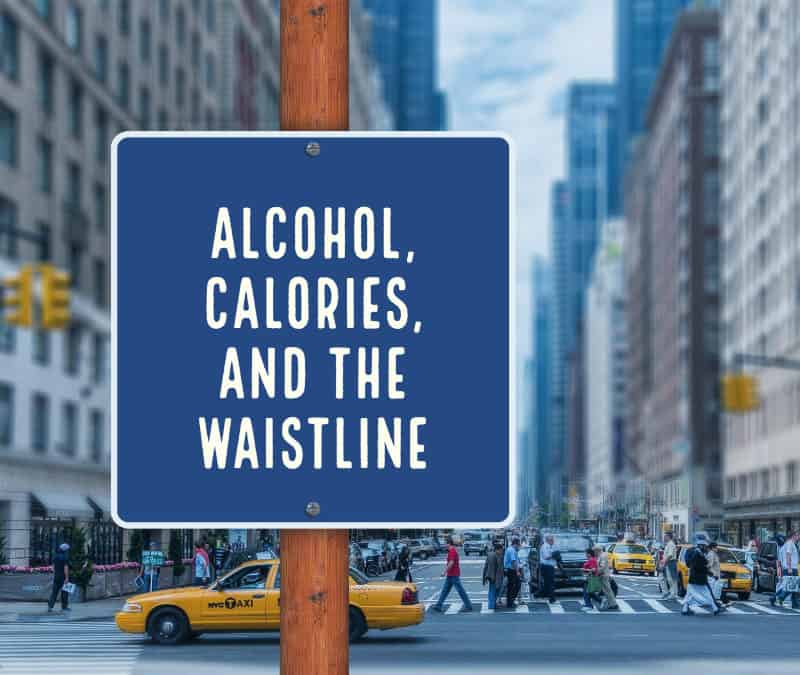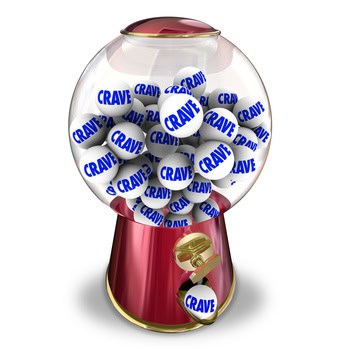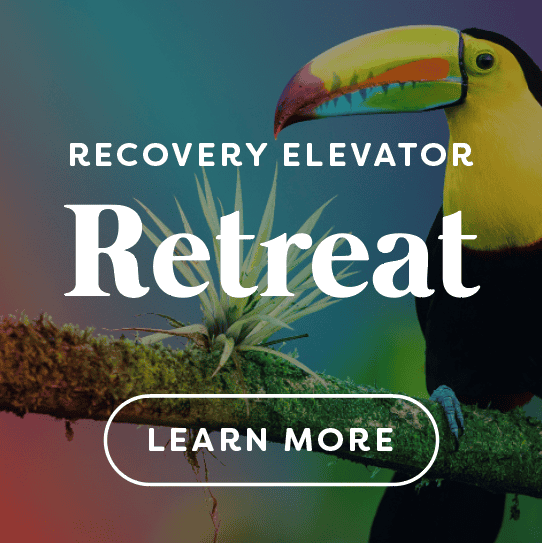
by Paul Churchill | Dec 24, 2018 | Blog, Diet & Fitness, Early Sobriety, Expectations, Nutrition
I drank a lot of alcohol. Alcohol caused a lot of damage in my life. Was any of it good? Was I able to at least get some nutritional value from $14 beer night? Well, let’s take a look.
Alcoholic beverages primarily consist of water, pure alcohol (chemically known as ethanol), and variable amounts of sugars and carbohydrates; their content of other nutrients, proteins, vitamins, or minerals is usually insignificant. Because they provide almost no nutrients, alcoholic beverages are considered “empty calories.” It’s safe to say a Twinkie has more nutritional value than any alcoholic drink, and it’s common knowledge that Twinkies are terrible for us. The good news is none of us lack any dietary components by not drinking. Alcohol is still shit.
Let’s talk calories for a second. 1 gram of alcohol contains 7 calories compared to 4 calories per gram of proteins and carbs, and 1 gram of fat contains 9 calories. Again, those are 7 hollow calories because the body never uses them.
Let’s find out what these calories are doing to us over the long haul.
1 12 oz. can of beer = 154 calories. 1 glass of wine around 125 calories and 1 whiskey coke has 180. Let’s average the three and use 153 calories per drink. Let’s say we average 5 daily drinks which equates to 765 meaningless calories per day. 5,355 per week and 278,460 per year. 1 pound of fat is roughly 3,500 calories, so this is close to 80 pounds of excess garbage the body must deal with.
Another snippet to drive this point home, 1 pint of beer contains roughly the same number of calories as a slice of pizza. But it’s not even apples to apples, because even though the slice of pizza isn’t the healthiest option, the pizza still contains some vitamins, minerals, and calories the body can use for energy. A pint of beer, not so much. If we average 4 pints a day, this is 1,460 slices of pizza per year, and I hope there’s at least pineapple on that pizza. I know I just lost some readers with that pineapple comment.
The human body is impressive, but it does not digest the calories from alcohol efficiently. What does efficiently burn alcohol? That would-be machines, cars, airplanes, motorcycles, generators, you get the point. The metabolism of alcohol is a complex, multi-stage process that takes place mostly in the liver and kidneys, not in the intestines, where normal digestion occurs. More significant to the current discussion, alcohol is almost never fully metabolized, but instead excreted as acetic acid, because it’s a toxin that the body wants to get rid of. When we binge drink, some of this is permanently deposited in the brain and stored as acetaldehyde.
Let’s talk about timing and when these calories are burned.
Alcohol temporarily keeps your body from burning fat, explains Dr. Pamela Peeke, author of the book “The Hunger Fix.” The reason is that your body can’t store calories from alcohol for later use, the way it does with food calories. For example, when we consume something high in calories like a hamburger, the body will way say, whoa, this is a lot of calories, this is more than I can handle at this moment, I’ll save some of this for later. The body can’t do this with alcohol. So when you drink, your metabolic system must stop what it’s doing (like, say, burning off calories from your last meal) to get rid of the booze. “Drinking presses ‘pause’ on your metabolism, shoves away the other calories, and says, ‘Break me down first!'” Peeke explains. The result is that whatever you recently ate gets stored as fat. What’s worse: “Research has uncovered that alcohol especially decreases fat burn in the belly,” Peeke adds. “That’s why you never hear about ‘beer hips’ — you hear about a ‘beer belly.'”
Why do we get uncontrollable hunger when we drink?
Alcohol impairs inhibitory control, which leads people to eat more. There is evidence that alcohol can influence hormones tied to feeling full. For example, alcohol may inhibit the effects of leptin, a hormone that suppresses appetite, and other hormones that inhibit food intake. According to one study, neurons in the brain that are generally activated by actual starvation, causing an intense feeling of hunger, can be stimulated by alcohol. Bring it on 2 am Taco Bell run.
Let’s talk about a decreased appetite malnutrition.
Stay with me for a second. Over time, chronic alcohol abuse and alcoholism can take a severe toll on a person’s appetite and nutrition levels. Alcohol inhibits the breakdown of nutrients into usable molecules by decreasing secretion of digestive enzymes from the pancreas. Alcohol impairs nutrient absorption by damaging the cells lining the stomach and intestines, and disabling transport of some nutrients into the blood. Also, nutritional deficiencies themselves may lead to further absorption problems. For example, folate deficiency alters the cells lining the small intestine, which in turn impairs absorption of water and nutrients, including glucose and sodium.
The NIAAA reports, “Even if nutrients are digested and absorbed, alcohol can prevent them from being fully utilized by altering their transport, storage, and excretion.”
After a while, the body, instead of working overdrive to properly digest what we consume, it hits the off switch on the appetite. I experienced this after about 10 months into owning my bar in Spain. At first, I would make a late-night stop at the pizza shop, but eventually, I found myself forcing calories into my body. I had entered the malnutrition phase of the addiction cycle. I found that it took about a week for my appetite to return once I quit drinking.

by Paul Churchill | Jan 30, 2016 | Alcohol Relapse, Blog, Diet & Fitness, Early Sobriety, The Bottom
On January 16, at 18 days sober, I got up before dawn and drove 50 miles outside of the city to toe the line for a 25K trail race. I had no competitive goals; I just wanted to enjoy racing again. And…I did. It was invigorating, challenging, and at times even euphoric. It was all the things my addiction has robbed from me over and over again in the past two years. Trail racing is more exhausting than road racing because your brain is perpetually engaged. You’re constantly judging, calculating, balancing. As I ran through the woods, dodging roots and fallen branches and sliding through the mud, I felt more alive than I had in weeks. Maybe I can really kick this, I thought. For real this time.
Two and a half hours later, I finished, covered in dirt and full of joy. Later I discovered I was 6th female, which was a nice bonus, but it wasn’t why I was out there. I left fairly quickly, because there was an after-party for the normal people (the ones who can have a few, call it a day and go about their business) and I knew that I wouldn’t be able to handle that. Smart decision, right? Yes…but it sucked.
Because in my post-collegiate running career, I’ve learned that I could not only run well enough to sometimes win races, sometimes even win money, but that I could also reward myself with a drink or two after a race or a hard training run.
But slowly, deceptively, that drink became more than two. Eventually it became five or six or seven. Finally, it replaced running entirely, and I didn’t see it happening until it was too late. But I miss those post-race rewards. I still remember the days when that’s truly all they were.
And I haven’t fucking gotten over it.
You’re a freak. Just accept it. You never really grew up. You can’t drink like an adult because you’re just a piece of shit with no self-control, I thought as I drove home after slamming two sodas and saying awkward goodbyes to people.
The thought festered and smoldered in my mind for three days, getting more and more unbearable…but I kept quiet.
I should have told someone. I should have reached out for help. Instead, I buried the thought, ashamed of my inability to be like other people. And eventually I broke, telling myself that an impending snowstorm and the inevitable few days off work was a good reason. This, of course, is a perfectly good excuse for most people, but the reality is there is no excuse in my case. There’s only the ugly, sober truth: I can’t drink. What’s fine for most people is poison for me. It didn’t take long to sink into oblivion, and for nearly a week I became a virtual ghost, completely removed from reality. The aftermath, of course, is never pretty. A more accurate description would be “horrifying.” What I’ve experienced in the past few days is not a hangover. It’s sickness, and I wouldn’t wish it on my worst enemy.
I still have hope that I will run again- maybe even compete again, sooner than later. But deep down I know that the bigger problem is that this could eventually kill me, and I don’t want to die.
You can run all you want, but you can’t escape yourself.

by wordpress | Nov 10, 2015 | Diet & Fitness, Early Sobriety, Helpful Tips
The brain sees sugar, opiates and alcohol in a similar way – as mechanisms to improve our moods and “take away the pain” from memories of our past and the current state of our lives. While many alcoholics have never concurrently abused other substances, it is not uncommon for us to hear someone in a 12-step meeting introduce him or herself as an “alcoholic/addict”. Let’s be clear – alcoholics ARE addicts. We are addicted to alcohol. We are compelled to drink. Whether we, as individuals, agree with researchers who say alcoholism is a mental disorder, or those who present evidence that alcoholism is a result of early childhood trauma, or that addictions are hereditary, until we accept that it is a problem in our lives and that we have to do something about it, all the “clean eating” and sugar purging will not matter.
Since you are reading this, I will assume you have made the decision to do something about your addiction and that you are concerned about the increase in your cravings for sweets. You want to change and there is a tendency to what to change everything all at once. This is why “quick fix” fitness and diet methods fail. You see, the mind needs at least 30 days to experience a change, another 30 to practice it, and then another 30 to see the beginning effects of the change and realize the change is sustainable. This is why in early recovery, if you try to stop drinking, stop eating sugar, start an exercise program, and cut out fatty foods all at once, your brain will likely not be able to process those changes and will reject them all.
In order to deal with your cravings, you really need to understand some key concepts of the recovery process. Basically, that your mind and body are connected. So, in order to solve the craving issues, you need to learn to let the emotions come, recognize changes as your body recovers, and begin to care for yourself.
Here are 5 key concepts that will help you with our cravings, your nutrition and your recovery, followed by some online resources:
- Feelings – You are so used to covering them up with alcohol that you may not recognize when you are hungry, emotional, or just tired. For one week, hone in on your feelings when you think you are hungry. If you have just eaten a meal, then drink some flavored water (lemons, limes, cucumbers). You may just be dehydrated, which is common when you consume large amounts of alcohol.
- Cravings – The minute you stopped drinking, your brain and body went on the hunt to replace the alcohol with something else. Sugar in all forms – white or raw granules, processed carbohydrates (donuts and cookies), candy (Snickers are my favorite), and fruit (even nature can give us a high) – can do for the brain what the alcohol used to. Unless you have blood sugar issues (diabetes), choosing a candy bar over a shot of whiskey is probably a better choice in early recovery. Eating an apple is even better.
- Nutrition – Your body has gotten used to replacing food with high caloric alcohol and low-quality food, especially if you spent so much money on drinking that you had less cash available to buy good food, and even less desire to cook for yourself. Once you have a week of zeroing in on your feelings and understanding when you are hungry, emotional or just tired, add raw or cooked veggies to at least one meal a day for a week. Even if it’s a can of corn or green beans, your body needs to start getting used to ingesting something other than sugar and alcohol.
- Time – The main reason my clients focus on their mindset during the first few weeks of one of my fitness/nutrition programs is because until they understand their feelings related to food and hunger, then practice mindful eating, and finally start buying healthier foods, they will not be ready to actually prepare and eat them. If you use the first 30 days of your journey to focus on not drinking, finding a method that will give you the tools you need for success (12-step program, therapy, treatment, etc.), and experience your feelings, you will be able to use the next 30-60 days getting the hang of eating better.
- Self-care – Eating well is part of taking care of yourself, but you also need to attend to your mind and body. If you have engaged in a program of some sort, you will undoubtedly be encouraged to use prayer and meditation in your daily routine. You may have continued to exercise while you were drinking – as a fitness professional, I certainly continued to train, although it did me little good while I was still pounding the beer. You may want to continue working out, but you may not have the energy or mindset to do so. Relax. Walk. Play with your kids. Or do nothing.
A word about supplementation – Although alcoholics tends to be deficient in a number of vitamins and minerals, the most common are Pyridoxine (Vitamin B6), Thiamine (Vitamin B1), and Folic Acid (Vitamin B Complex). While you could start taking over-the-counter supplements, you may not need them, thus pouring money down the toilet, both literally and figuratively. Ask your primary care provider about having a complete metabolic screen done to check for any deficiencies, and after the results are in, ask about dietary changes and supplementation. In case you’re curious about where the vitamins above occur naturally in food, here you go:
Vitamin B1 (Thiamine) is found in rice, egg noodles, meat (pork chops), seafood (trout, mussels, and tuna), black beans, and acorn squash.
Vitamin B6 (Pyridoxine) is found in chickpeas, meat (beef liver, chicken breast, and turkey), fish (tuna and salmon), starchy vegetables (potatoes), and bananas.
Vitamin B Complex (Folic Acid) is found naturally in leafy vegetables (spinach, broccoli, and lettuce), okra, asparagus, fruits (bananas, melons, and lemons) beans, yeast, mushrooms, meat (beef liver and kidney), orange juice, and tomato juice.
More resources:
Guided meditation – http://www.healthline.com/health/mental-health/top-meditation-iphone-android-apps#2
Nutrition in Recovery guides developed especially for the Recovery Elevator – (http://shellylarsonfitness.com/recoverynutrition
Nutrition resources used by my clients – (http://shellylarsonfitness.com/eat
Sobriety resources – https://www.recoveryelevator.com/resources
“One Size Does Not Fit All!” free webinar – http://shellylarsonfitness.com/webinar
*Disclaimer – Information provided in this post written by Shelly Larson, or in any other materials produced by the author, are for informational purposes only, and should not be construed as a substitute for medical advice. Please contact a qualified healthcare provider regarding matters of personal well being.





